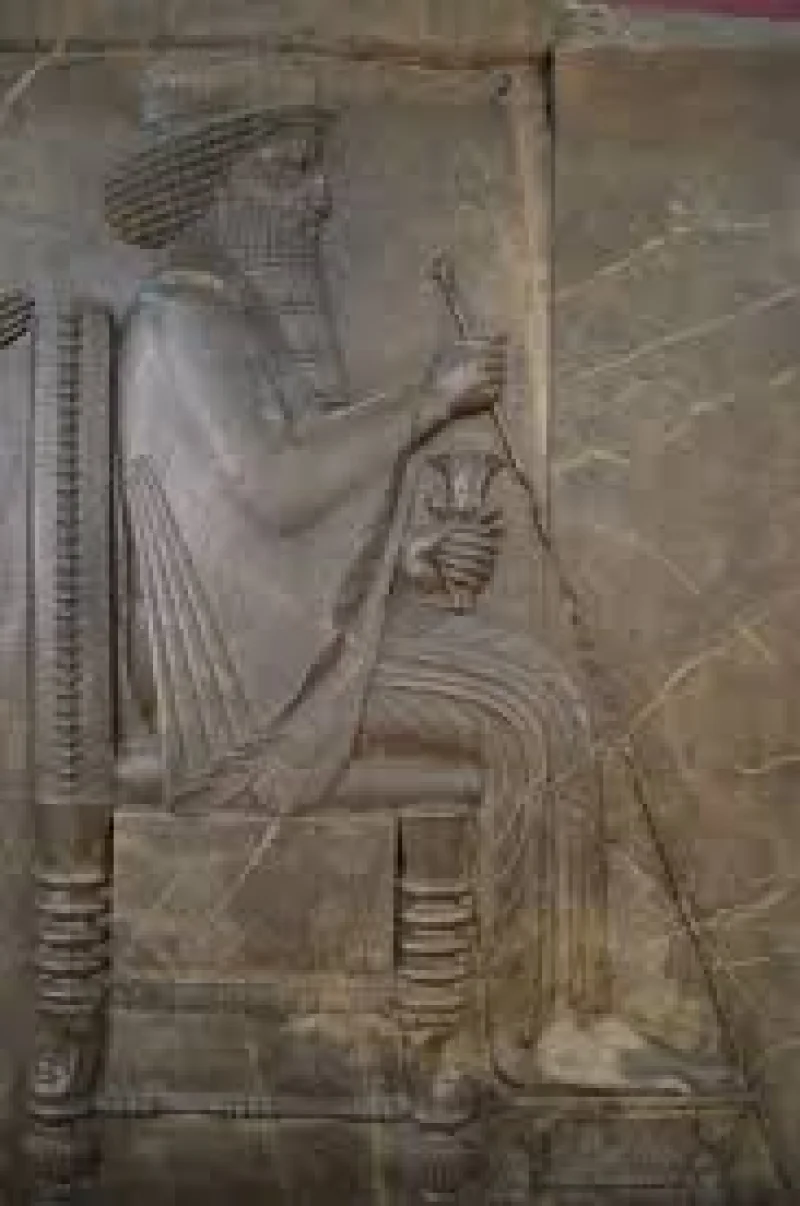Short Summary
Xerxes I, also known as Xerxes the Great, was a Persian king who ruled from 486 BCE to 465 BCE. He is best known for his massive invasion of Greece in 480 BCE, which included the famous battles of Thermopylae and Salamis. Although his military campaigns ultimately failed, Xerxes is remembered for his significant role in the Greco-Persian Wars and his contributions to the expansion and administration of the Persian Empire. His reign is marked by grand architectural projects and an attempt to consolidate the empire's vast territories.
Early Life & Education
Xerxes I was born around 518 BCE to Darius I, the reigning king of Persia, and Atossa, the daughter of Cyrus the Great. Growing up in the royal court, Xerxes was exposed to the intricacies of governance and military strategy from an early age. As a member of the Achaemenid dynasty, he was educated in the Persian traditions and trained in leadership skills necessary for a future ruler. His mother, Atossa, played a significant role in shaping his perspectives, and his early life was marked by exposure to both Persian and Median cultures. This diverse upbringing equipped him with the knowledge required to manage the vast Persian Empire.
Career Highlights
Xerxes ascended the throne in 486 BCE after the death of his father, Darius I. His reign was characterized by efforts to complete projects initiated by his father, including the construction of the grand palace at Persepolis. In 480 BCE, he launched a massive military campaign against Greece, culminating in the battles of Thermopylae, Salamis, and Plataea. Despite initial successes, the campaign ultimately failed, leading to significant losses for Persia. Xerxes also focused on consolidating his empire, maintaining its infrastructure, and extending its influence through various construction and administrative projects.
Major Achievements
- Conquest of Egypt: Successfully quelled a rebellion in Egypt, reasserting Persian control.
- Battle of Thermopylae: Notable for his strategic approach despite eventual defeat.
- Development of Persepolis: Enhanced the grandeur of the Persian capital through architectural advancements.
- Expansion of the Royal Road: Improved communication and trade across the empire.
- Religious Tolerance: Maintained policies of tolerance towards different cultures and religions within the empire.
Famous Quotes
- "I am Xerxes, great king, king of kings, king of lands, king of this earth far and wide."
Interesting Facts
- Xerxes was assassinated in 465 BCE by a member of his court.
- The failed Greek invasion marked the beginning of the decline of the Achaemenid Empire.
- He was portrayed in the movie "300," which dramatized the Battle of Thermopylae.
- Xerxes was known for his luxurious lifestyle and opulent court.
Legacy / Influence
Xerxes I left a complex legacy characterized by both military failures and significant contributions to Persian culture and architecture. His reign marked the height of the Achaemenid Empire's power, yet also set the stage for its eventual decline. Despite his military setbacks, his efforts in infrastructure and administration helped maintain the empire's cohesion, influencing subsequent Persian rulers and contributing to the historical narrative of East-West conflicts.
FAQ
Q: Why is Xerxes I famous?
A: He is famous for his invasion of Greece and his role in the Greco-Persian Wars.
Q: What was Xerxes' most significant military campaign?
A: His most significant campaign was the invasion of Greece in 480 BCE.
Q: How did Xerxes I die?
A: He was assassinated in 465 BCE by a member of his court.
Q: What architectural project is Xerxes known for?
A: He is known for his contributions to the development of Persepolis.









